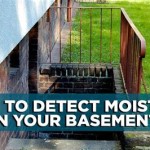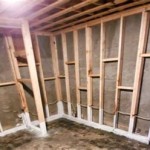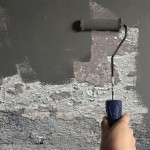What to Do With Flooded Basement Carpet
A flooded basement presents a significant challenge for homeowners, particularly when carpet is involved. Water damage can lead to a range of problems, from unpleasant odors and unsightly stains to structural damage and the growth of mold, which poses serious health risks. Addressing the issue promptly and effectively is crucial to mitigating these issues and restoring the basement to a safe and usable condition. The decisions made in the immediate aftermath of a flood directly influence the long-term outcome and the extent of repairs required.
The severity of the flooding plays a key role in determining the appropriate course of action. A minor leak or seepage may require a different approach than a major flood event involving several inches or even feet of water. Factors such as the source of the water (clean, gray, or black), the duration of the flooding, and the type of carpet and padding installed all contribute to the complexity of the situation. Therefore, a thorough assessment of the damage is the necessary first step.
Safety should be the paramount concern when dealing with a flooded basement. Before entering the area, it is essential to ensure that the electricity is turned off to the affected area to prevent the risk of electrocution. Wearing protective gear, including waterproof boots, gloves, and a mask, is recommended to minimize exposure to contaminants and potential hazards. Furthermore, it is also necessary to have the basement checked for possible structural damage prior to entry.
Assessing the Damage and Determining the Water Source
The initial assessment of the flooded basement carpet should focus on determining the extent of the water damage and identifying the source of the water. This information is critical for developing an effective remediation plan. A visual inspection of the carpet, walls, and surrounding areas should be conducted to identify areas of saturation and any visible signs of mold growth. The type of water involved significantly impacts the remediation process.
Clean water, originating from sources like rainwater or burst pipes without contamination, presents the least risk. Gray water, which may contain some contaminants from sources like washing machines or dishwashers, requires more cautious handling. Black water, derived from sewage or floodwaters contaminated with hazardous materials, presents the greatest health risk and requires professional remediation. Determining the water source is paramount as different categories require different cleaning and safety measures.
The depth of the water and the duration of the flooding are also important factors to consider. Carpet that has been submerged for an extended period is more likely to be severely damaged and may be beyond salvage. Similarly, prolonged exposure to moisture creates a more favorable environment for mold growth. Documenting the extent of the damage with photographs or videos can be helpful for insurance claims and for monitoring the progress of the remediation efforts.
Investigating the source of the water is equally important. Identifying and addressing the cause of the flooding, whether it is a leaking pipe, a faulty sump pump, or a drainage issue, will prevent future occurrences and minimize the risk of recurring water damage. Addressing the source of the water intrusion is a necessary step to prevent future water damage in the basement. Homeowners should inspect their roof and drainage system around the house regularly in order to prevent such flooding.
Removing Water and Drying the Carpet
The first step in mitigating water damage to basement carpet is the prompt removal of standing water. This can be accomplished using a variety of methods, depending on the volume of water involved. A wet/dry vacuum cleaner is effective for removing smaller amounts of water, while a submersible pump may be necessary for dealing with larger floods. The priority is to remove as much water as possible as quickly as possible.
Once the standing water has been removed, the focus shifts to drying the carpet and the underlying padding. Removing the carpet from the basement is often necessary to facilitate thorough drying and prevent mold growth. If the carpet can be salvaged, it should be extracted with a carpet cleaner/extractor. The carpet will need to be dried on a flat surface, outside or inside, depending on space available. The carpet padding should be discarded and replaced. The basement floor beneath the carpet must be thoroughly cleaned and dried before new carpet can be installed.
Industrial-grade dehumidifiers and air movers are essential for removing moisture from the air and promoting rapid drying. These units should be strategically placed to maximize airflow and target areas of high humidity. The drying process may take several days, depending on the severity of the flooding and the ambient humidity levels. Monitoring the moisture levels with a moisture meter is crucial to ensure that the carpet and underlying surfaces are thoroughly dry.
During the drying process, it is important to maintain good ventilation in the basement. Opening windows and doors can help to circulate air and remove moisture. However, if the outdoor humidity levels are high, it may be necessary to rely solely on dehumidifiers and air movers to control the moisture levels. Removing the excess moisture is necessary to prevent mold growth.
Cleaning and Sanitizing the Affected Area
After the carpet and surrounding areas have been thoroughly dried, the next step is to clean and sanitize the affected surfaces. This is essential for removing contaminants, preventing mold growth, and restoring the basement to a safe and healthy condition. The specific cleaning and sanitizing agents used will depend on the type of water involved and the materials being cleaned.
For clean water floods, a mild detergent solution may be sufficient for cleaning the carpet and other surfaces. However, for gray water or black water floods, a stronger disinfectant is necessary to kill bacteria and viruses. Bleach solutions are commonly used for sanitizing surfaces, but it is important to follow the manufacturer's instructions carefully and to wear appropriate protective gear. It is necessary to ensure adequate ventilation when using cleaning solutions in the basement.
When cleaning carpet, it is important to use a carpet cleaner or steamer that is designed for wet extraction. This will help to remove embedded dirt and contaminants from the carpet fibers. The carpet should be thoroughly rinsed after cleaning to remove any residual detergent or cleaning agents. After the carpet has been cleaned and sanitized, it should be treated with a mold inhibitor to prevent future mold growth. The mold inhibitor is important, even if no traces of mold were found following the flooding.
In addition to cleaning the carpet, it is also important to clean and sanitize any other surfaces that may have been affected by the floodwater, including walls, floors, and furniture. Porous materials, such as drywall or upholstery, may need to be discarded if they have been significantly damaged by water. Taking these extra steps will ensure the basement is free of pathogens.
If mold growth is present, it is essential to address the issue promptly and effectively. Minor mold infestations can often be cleaned with a bleach solution, but larger infestations may require professional remediation. It is important to identify and address the underlying cause of the mold growth to prevent future occurrences. Addressing mold growth will ensure the remediation process is successful.
Given the complexities and potential health risks associated with flooded basement carpet, it is often advisable to consult with a professional water damage restoration company. These companies have the expertise and equipment necessary to effectively assess the damage, remove water, dry the affected areas, and prevent mold growth. They can also assist with insurance claims and provide guidance on the proper steps to take to restore the basement to its pre-flood condition. Consulting with a professional water damage restoration company will ensure the basement is dry and free of mold and pathogens.

How To Dry Out Basement Carpeting Diy Family Handyman

Common Causes Solutions For A Wet Carpet In The Basement Everdry Toledo Waterproofing Blog Latest News And Tips Basements

What You Should Do After The Flood

7 Tips For Drying Wet Carpet Preventing Mold Growth Astrobrite Local Family Run

How To Take Care Of Water Damaged Carpets Elite Restoration

Dealing With Basement Water Damage After Flooding To Avoid Mold Mildew Just Plain Cooking

Here S What To Do With Your Carpets After A Flood

Wet Carpet In Basement How To Remove It Victorious Flooring

Commercial Office Carpet Cleaning Mississauga Brampton Working Environment

How To Dry Wet Carpet
Related Posts







